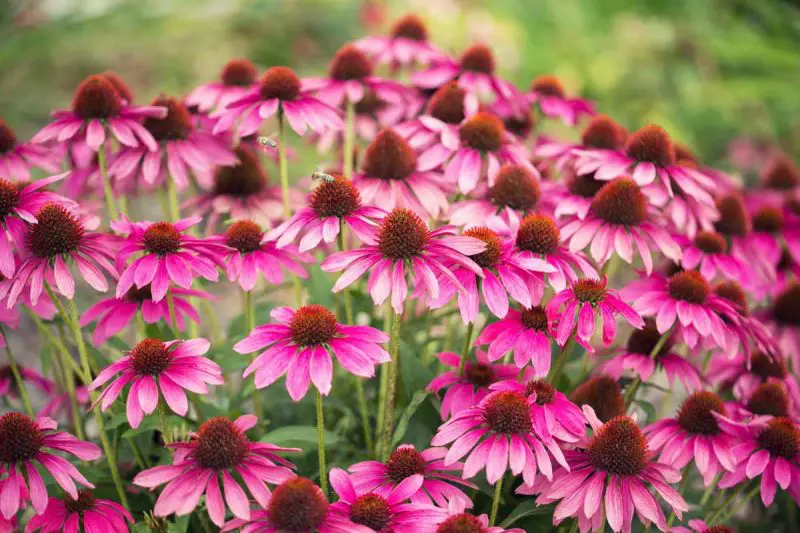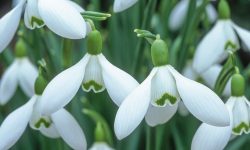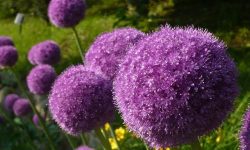Coneflowers, scientifically known as Echinacea, are among the most beloved perennials for home gardeners. Their vibrant petals and long-lasting blooms make them a staple in both ornamental beds and pollinator gardens. Native to North America, these hardy plants thrive in various climates, attracting bees, butterflies, and birds. Knowing the right time to plant coneflowers is key to ensuring healthy growth and continuous flowering throughout the season.
Planting at the correct time allows the roots to establish before extreme weather sets in, whether it’s the heat of summer or the chill of winter. This guide will cover the optimal planting periods, climate-specific tips, and practical care advice so your coneflowers can produce stunning blooms all season long.
Understanding the Growth Cycle of Coneflowers

Coneflowers follow a clear annual growth pattern that helps gardeners plan care effectively. In early spring, new shoots emerge from the crown, using stored energy from the roots. As temperatures warm, plants quickly develop sturdy stems and form buds, leading to peak blooming in summer. Flowers attract pollinators and continue until early fall, after which petals fade and seed heads form. By late fall, growth slows, and plants enter dormancy, storing nutrients in the roots to prepare for the next growing season.
After dormancy begins, the above-ground foliage naturally dies back, leaving only dry stems and seed heads. Many gardeners leave these seed heads in place through winter, as they not only add texture to the garden but also provide food for birds such as goldfinches. This period of rest is essential for the plant’s long-term health, allowing its deep roots to recharge.
When spring returns, coneflowers awaken with renewed vigor, often producing stronger and more abundant blooms than the previous year. Understanding this cycle helps gardeners make informed decisions about pruning, dividing, and fertilizing at the right times, ensuring vibrant color and healthy growth year after year.
Factors That Influence Planting Time
Climate Zone and Local Weather Patterns
The USDA hardiness zone where you live plays a significant role in determining the best planting time for coneflowers. These hardy perennials perform well in Zones 3 through 9, but each zone experiences different temperature ranges, frost dates, and seasonal changes. In colder northern regions, planting too early can expose tender seedlings to late spring frosts, which may damage or kill young plants. Conversely, in southern or hotter climates, planting during the height of summer can cause severe stress due to intense heat and potential drought conditions. This heat stress can stunt root development, reducing future bloom potential.
Understanding your average last frost date in spring and first frost date in fall is essential. Many gardeners in cooler areas wait until the soil temperature reaches at least 60°F (15°C) before planting, while those in warmer zones often take advantage of mild fall weather for root establishment before winter. Monitoring local weather patterns—especially sudden cold snaps or unseasonal heat waves—can help you choose a planting window that promotes healthy growth from the start.
Type of Planting Material
The choice between seeds, nursery transplants, or divisions directly affects your planting schedule. Seeds require a longer lead time, often needing to be started indoors six to ten weeks before the last expected frost in cooler climates. They may not bloom until their second year, as the first year is primarily dedicated to root and foliage development. Nursery transplants offer a head start, as they are already partially grown and can be planted in spring or early summer for blooms the same season. Divisions, taken from mature plants, are best handled during dormancy in late fall or early spring before active growth resumes. This timing allows the divided roots to recover and establish before facing summer heat or winter cold.
Choosing the right planting material based on your gardening goals—whether quick blooms or long-term establishment—ensures that your timing aligns with the plant’s growth needs.
Soil Preparation and Condition
Healthy soil is the foundation for vigorous coneflower growth, and preparing it properly can influence when you plant. Coneflowers thrive in well-draining soil with a neutral to slightly acidic pH (around 6.0 to 7.0). If your soil needs amending, it’s wise to allow extra time before planting to make those adjustments. For heavy clay soils, adding compost, coarse sand, or even small gravel can improve drainage and prevent waterlogged roots. For sandy soils, incorporating organic matter like leaf mold, peat moss, or aged manure helps retain moisture and provides essential nutrients.
Conducting a soil test early in the season allows you to correct pH imbalances and nutrient deficiencies in advance. If substantial amendments are needed, it’s often best to prepare the soil several weeks before planting, giving materials time to integrate and creating a stable, nutrient-rich environment for your coneflowers to thrive.
Best Time to Plant Coneflowers by Climate
Planting in Cold Climates (Zones 3–5)
In northern climates, the safest time to plant coneflowers is late spring, after the last frost has fully passed. This timing prevents frost damage to young shoots and allows the plants to grow through the entire warm season before winter arrives. Planting too early can lead to stunted or lost seedlings if a late freeze occurs.
For seeds, start them indoors six to eight weeks before the last frost date in seed trays or small pots with well-draining soil. Once seedlings develop a few sets of true leaves and the soil outdoors has warmed to at least 60°F (15°C), transplant them into the garden. This head start often means flowers in the first summer instead of waiting until the second year. A light mulch around new plants can help maintain soil warmth in unpredictable spring weather.
Planting in Mild Climates (Zones 6–7)
Gardeners in mild climates can plant coneflowers in early spring for blooms the same year or in early fall for stronger plants the following spring. Spring planting takes advantage of warming soil and longer daylight, giving plants time to grow foliage and buds quickly.
Fall planting, however, has the benefit of cooler air and warm soil, which encourages deep root growth without stressing plants. Aim to plant at least six weeks before the first expected frost, ensuring roots are established before winter dormancy. In both seasons, consistent moisture is key during the first few weeks, especially if rainfall is irregular.
Planting in Warm Climates (Zones 8–9)
In hot climates, the best planting window is late fall through winter, when daytime temperatures are mild and nighttime temperatures are cool but not freezing. Planting during this period allows coneflowers to develop deep, resilient roots before the intense summer heat arrives.
Avoid planting in mid-summer, as excessive heat can stress young plants, causing wilting and slow establishment. If planting in cooler months, water regularly until the roots are well established, then reduce watering as the plants adapt to heat and dry conditions. A layer of mulch will also help retain soil moisture and protect roots from temperature swings.
When to Plant Coneflowers from Seeds
Starting coneflowers from seeds can be rewarding, but it requires patience. These plants may take their first year to establish and bloom more fully in the second year.
For outdoor sowing, plant seeds in early spring once the soil is warm enough to encourage germination. In colder zones, you can also use a method called winter sowing, where seeds are planted outdoors in late winter to naturally stratify and sprout in spring.
If starting indoors, sow seeds six to ten weeks before the last expected frost. Provide bright light and maintain a temperature around 65–70°F (18–21°C) for successful germination. Transplant seedlings when they have developed two to three sets of true leaves.
When to Plant Nursery Transplants
Planting nursery-grown coneflower transplants at the right time helps them establish quickly and produce healthy blooms. The best time is in spring after the danger of frost has passed, when soil temperatures consistently reach at least 60°F (15°C). This allows the roots to develop before the heat of summer, ensuring the plant can handle dry periods and high temperatures. In cooler climates, spring planting also gives the plant an entire growing season to settle before winter dormancy.
In warmer southern regions, you can also plant nursery transplants in early fall. This gives the roots a few months to grow in cooler soil without the stress of summer heat, leading to stronger blooms the following spring. Whether planting in spring or fall, choose a location with full sun and well-draining soil to prevent root rot and encourage more abundant flowering. Water the plants well for the first few weeks to help them establish, then gradually reduce watering as they become drought-tolerant.
Planting Coneflowers from Divisions
Planting coneflowers from divisions is an effective way to rejuvenate older plants while creating new ones for your garden. This method works best for mature clumps that are at least three to four years old, as younger plants may not have developed enough root mass to handle the stress of division. The ideal time to divide is in early spring, just as new growth begins to emerge, or in early fall, when the plant can focus on root establishment before winter.
To start, dig around the base of the plant, keeping as much of the root system intact as possible. Lift the clump carefully and use a sharp, clean spade or garden knife to cut it into smaller sections, ensuring each division has a healthy root system and several strong shoots. Replant the divisions immediately in well-drained soil and full sun, spacing them about 18 to 24 inches apart to allow for mature growth. Water thoroughly after planting and keep the soil evenly moist until the plants are established. With proper care, these divisions will grow quickly and reward you with strong blooms in the following season.
How Planting Time Affects Bloom Duration
The timing of when you plant coneflowers can significantly influence how long they bloom during the growing season. Early planting, especially in spring after the last frost, allows the plants to establish strong roots before the heat of summer. With a solid root system in place, these early-planted coneflowers often produce more abundant flowers and maintain blooms for a longer period, sometimes extending well into early fall.
Late spring or early summer planting can still yield beautiful flowers, but the blooming window may be shorter. Plants installed later in the season have less time to develop robust roots, which can lead to fewer blooms and a quicker decline in flowering. In warmer climates, planting too late in summer may cause transplant shock, which delays bloom production until the following year.
Fall planting can be effective if you want strong blooms the next season. By planting in early to mid-fall, the plants focus on root growth during the cooler months and emerge in spring ready to produce a long display of flowers. However, in colder regions, fall planting should be done at least 6 to 8 weeks before the first frost to give roots time to establish.
Strategically choosing your planting time based on your climate and bloom goals can maximize the flowering period. Gardeners aiming for a long, continuous display often stagger plantings in spring and early summer or combine nursery transplants with seed-grown plants to extend the bloom season naturally.
Preparing Soil for Coneflowers
Soil Testing and Amendments
Before you begin planting coneflowers, it’s essential to evaluate the condition of your soil to give your plants the best start. Begin with a soil test to determine both pH and nutrient levels. Coneflowers grow best in a slightly acidic to neutral range, ideally between 6.0 and 7.0. If your soil is too acidic, you can raise the pH by adding garden lime. On the other hand, if it’s too alkaline, incorporating elemental sulfur will help bring it back into balance. Beyond pH adjustments, enriching the soil with organic matter such as well-rotted compost or aged manure will boost fertility, enhance soil structure, and promote healthy root growth. Keep in mind that coneflowers are not heavy feeders—overly fertile soil can encourage excessive leafy growth at the expense of flowers, so aim for balanced nutrition rather than overloading with fertilizer.
Ensuring Good Drainage
One of the most important factors in growing healthy coneflowers is providing excellent drainage. These perennials are highly tolerant of drought once established, but they struggle in wet, compacted soils where water lingers after rainfall. Prolonged soggy conditions can lead to root rot and plant decline. If your soil has a tendency to retain moisture, you can improve drainage by working in coarse sand, perlite, or small gravel along with organic matter. In areas where heavy clay is a problem, raised garden beds or mounded planting areas are a practical solution to keep roots from sitting in water. Planting on a gentle slope can also encourage excess water to run off, reducing the risk of waterlogged roots. Creating the right foundation in the soil before planting will help your coneflowers establish quickly and bloom abundantly year after year.
Seasonal Care After Planting
Spring Care
After planting in spring, maintain consistent soil moisture to help young plants establish strong root systems. Avoid overwatering, as soggy soil can cause root rot. Gently remove any surrounding weeds, as they can quickly compete with coneflowers for nutrients and water. Applying a thin layer of organic mulch can help retain soil moisture and regulate temperature, while also suppressing weed growth. A balanced, slow-release fertilizer at the start of the season can give plants a healthy boost for active growth.
Summer Care
Once your coneflowers are well established, they become highly drought-tolerant. Water only during extended dry periods, directing water to the base of the plant to avoid wetting the foliage. Deadhead spent blooms regularly to stimulate more flowers throughout the season and to keep plants looking tidy. If you prefer natural self-seeding for more plants next year, allow some seed heads to remain. In very hot regions, an occasional deep watering can help plants maintain vigor during heatwaves.
Fall Care
For fall plantings, water consistently until the soil begins to freeze to ensure roots are well anchored before winter. Apply a generous layer of mulch around the base to protect roots from sudden temperature swings. In colder climates, this added insulation can be the difference between a plant surviving or being lost to winter stress. Cutting back spent stems to a few inches above the ground can help reduce the risk of disease while keeping the garden tidy, though some gardeners leave stems and seed heads standing to provide winter food for birds.
Extending Bloom Season for All-Summer Color
Staggered Planting
To keep your garden glowing with color for as long as possible, try staggering your coneflower plantings within the recommended spring planting window. Plant a first batch early in the season so they can establish quickly and bloom ahead of schedule. A second or even third planting a few weeks later will produce flowers after the first wave begins to fade, creating a seamless succession of color. This method is particularly effective in regions with long growing seasons, as it prevents your garden from experiencing a mid-summer lull in blooms.
Deadheading and Cutting Back
Deadheading — the practice of snipping off spent flower heads — is one of the simplest and most effective ways to extend the blooming period of coneflowers. By removing faded blooms, you prevent the plant from diverting its energy into seed production and instead encourage it to channel resources into forming fresh buds. For an extra burst of color late in the season, you can cut the entire plant back by about one-third in late summer. Many coneflower varieties respond to this by producing a healthy flush of new growth and a bonus round of fall flowers before the first frost.
Companion Planting
Strategic companion planting can also stretch your bloom season while enhancing your garden’s overall aesthetic and attracting more pollinators. Pair coneflowers with flowering plants that peak at different times, ensuring there’s always something in bloom from spring through fall. Early summer stars like bee balm (Monarda) add a vibrant splash before coneflowers reach their peak, while black-eyed Susans and Russian sage can take over the spotlight as coneflowers start to wane. Together, these plants create a dynamic, layered display that evolves beautifully over the growing season.
Common Mistakes to Avoid When Planting Coneflowers
Planting in Poorly Drained Soil
Coneflowers tolerate a wide range of soil types, but they cannot thrive in waterlogged conditions. When the soil holds too much moisture, the roots are deprived of oxygen, leading to root rot, fungal infections, and plant death. Many gardeners make the mistake of planting in low-lying areas where rainwater collects.
To prevent this, always choose a location with loose, well-draining soil. If your garden has heavy clay, amend it with coarse sand, compost, or fine gravel to improve aeration. Raised beds are another excellent solution for preventing standing water around the root zone.
Choosing the Wrong Location for Sunlight Needs
Coneflowers should be planted so that the crown (where the stem meets the roots) sits at soil level. Planting too deep suffocates the crown and encourages rot, while planting too shallow exposes the roots to heat and drought stress.
To get it right, dig a hole just deep enough to match the height of the root ball and slightly wider than its diameter. Backfill gently, pressing the soil around the plant without compacting it excessively. Water thoroughly after planting to settle the soil and eliminate air pockets.
Planting Too Deep or Too Shallow
It’s tempting to plant coneflowers close together for an instant full look, but overcrowding creates poor air circulation. This leads to higher humidity around the foliage, encouraging powdery mildew, leaf spot, and other fungal diseases. Overcrowded plants also compete for light, water, and nutrients, weakening their growth and bloom potential.
For most varieties, leave at least 18 to 24 inches between plants. This spacing allows each coneflower to develop a strong root system, produce more blooms, and reduce the risk of disease spread.
Overcrowding Plants Without Proper Spacing
Coneflowers are sun-loving plants that need a minimum of 6 to 8 hours of direct sunlight daily. Planting them in partial or full shade results in weak, floppy stems, fewer flowers, and pale, less vibrant blooms. Shade-grown plants are also more prone to fungal problems due to prolonged leaf moisture.
Before planting, observe the sunlight pattern in your garden throughout the day. Select a site with maximum sun exposure, especially during the peak growing season.
Ignoring Soil Fertility and pH
Watering mistakes are among the most common causes of poor coneflower performance. Overwatering encourages root rot, while underwatering during establishment can stunt growth and reduce blooming.
Newly planted coneflowers should be watered deeply once or twice a week until well-established. After that, they are drought-tolerant and generally only need supplemental water during prolonged dry periods. Always water at the base of the plant, avoiding the foliage to minimize disease risk.
Overwatering or Underwatering After Planting
Watering mistakes are among the most common causes of poor coneflower performance. Overwatering encourages root rot, while underwatering during establishment can stunt growth and reduce blooming.
Newly planted coneflowers should be watered deeply once or twice a week until well-established. After that, they are drought-tolerant and generally only need supplemental water during prolonged dry periods. Always water at the base of the plant, avoiding the foliage to minimize disease risk.
Planting at the Wrong Time
Planting too early in cold soil can stress young plants, while planting too late in hot summer weather makes it harder for roots to establish. The ideal planting time for coneflowers is in spring after the danger of frost has passed or in early fall, giving roots time to grow before winter dormancy.
Check your local frost dates and soil temperature before planting. Aim for soil temperatures between 60°F and 70°F for optimal establishment.
Failing to Remove Weeds Early On
Some gardeners underestimate the impact of weeds and allow them to grow alongside young coneflowers. While coneflowers are hardy, weeds compete aggressively for moisture, nutrients, and sunlight—especially during the critical establishment phase. If weeds are not removed early, they can quickly overtake the planting area, resulting in weaker plants and reduced blooms.
Before planting, thoroughly clear the bed of any existing weeds, including roots, to prevent regrowth. Loosen the soil to a depth of 12 to 15 inches and mix in compost or well-aged manure. This not only improves soil fertility but also enhances its structure, promoting deep, healthy root systems that can better support abundant flowering. Regularly monitor the bed in the first few months and hand-pull any new weeds before they set seed.
Using Too Much Fertilizer
Coneflowers are not heavy feeders, and giving them too much fertilizer—especially nitrogen-rich blends—can upset their natural growth balance. Excess nitrogen promotes lush leaf growth at the expense of flowers, and can even cause stems to grow weak and floppy, leaving the plant more vulnerable to wind damage or lodging.
For best results, use a balanced, slow-release fertilizer at planting time in spring. Apply sparingly, as overfeeding can do more harm than good. If plants show signs of nutrient deficiency in midsummer, provide a light top-up with compost or a diluted balanced fertilizer. Always water well after feeding to help nutrients reach the root zone without causing fertilizer burn.
Signs You Planted at the Right Time
When you plant coneflowers at the right time, you’ll notice quick and healthy establishment. New green shoots will appear within a couple of weeks, and leaves will look vibrant without signs of yellowing or wilting. The plant will stand upright, resist minor weather changes, and begin forming strong root systems, leading to steady growth and, in season, an abundance of blooms.
Another positive sign is the plant’s ability to adapt quickly to its environment without showing stress. Coneflowers planted at the right time will maintain consistent leaf color, produce sturdy stems, and show minimal pest or disease issues in the early stages. This healthy start sets the foundation for long-term vigor and reliable flowering in the following seasons.
Over time, these well-timed plantings will also develop a natural rhythm with the climate. They will bloom at their peak in line with your region’s season, ensuring maximum flower size, color intensity, and longevity. This harmony with nature not only enhances your garden’s beauty but also supports pollinators with a dependable food source year after year.
Seasonal Coneflower Bloom Care Calendar
Spring
Spring marks the beginning of the active growth cycle for coneflowers. As soon as the danger of frost has passed and new shoots emerge, remove any dead foliage or debris left from winter to reduce disease risks. Apply a thin layer of compost or well-balanced slow-release fertilizer to promote strong root development and healthy foliage. Keep the soil consistently moist during this period, especially for newly planted coneflowers, to encourage quick establishment. If you started seeds indoors, this is the time to transplant them outdoors. Regularly monitor for signs of pests such as aphids and treat promptly to avoid stunted growth.
Summer
Summer is peak bloom season for coneflowers. Ensure plants receive at least six hours of sunlight daily, and water during extended dry spells to maintain vibrant flowers. Deadheading spent blooms will encourage continuous flowering and prevent unwanted self-seeding if you prefer controlled growth. Mulching around the base will help retain soil moisture and suppress weeds, especially during hot spells. Mid-summer is also an excellent time to cut flowers for arrangements, which can stimulate more blooms later in the season. Keep an eye out for powdery mildew or leaf spot and address any issues quickly to preserve plant health.
Fall
In early fall, coneflowers may still produce blooms, especially if you have been deadheading throughout summer. Continue watering during dry periods, as healthy roots going into winter will support better flowering the following year. If planting in fall, do so at least six weeks before the ground freezes to allow roots to establish. Consider leaving some seed heads on the plants for birds such as goldfinches, which feed on them during the colder months. Apply a layer of mulch after the first hard frost to protect the crown and roots from winter temperature swings.
Winter
During winter, coneflowers go dormant. In colder climates, a protective mulch layer is essential to shield the roots from freeze-thaw cycles. Avoid cutting back stems entirely until late winter or early spring, as leaving them in place provides food and shelter for beneficial wildlife. In regions with mild winters, watering occasionally during extended dry periods will prevent root dehydration. Winter is also an ideal time to plan next season’s planting schedule, order seeds, or prepare indoor sowing setups for early spring.
Common Blooming Problems and How to Fix Them
Plants Produce Few or No Flowers
One of the most common frustrations for gardeners is coneflowers producing abundant foliage but very few blooms. This often happens when plants receive too little sunlight. Coneflowers need at least six to eight hours of direct sun each day to trigger strong flowering. Relocating plants to a sunnier spot or pruning back nearby shade-casting vegetation can significantly improve bloom production. Over-fertilizing, especially with nitrogen-rich products, can also cause lush leaves at the expense of flowers. Use a balanced fertilizer or one slightly higher in phosphorus to encourage bud formation.
Blooms Fade Too Quickly
If your coneflower blooms fade or droop after only a short time, the cause could be heat stress or inadequate watering during dry spells. Deep, infrequent watering helps roots grow deeper and more resilient to summer heat. Applying mulch will also moderate soil temperature and retain moisture. In extremely hot climates, providing partial afternoon shade can extend bloom life without significantly reducing overall flowering.
Plants Appear Stunted and Weak
Poor soil quality and inadequate nutrition can lead to small, weak plants that fail to bloom well. Conduct a soil test to check for deficiencies, and amend the soil with compost or aged manure before the growing season. If plants are severely stunted, consider dividing and replanting them in fresh, well-draining soil with more organic matter.
Flower Heads Are Distorted or Stunted
Distorted blooms can be a sign of aster yellows, a disease spread by leafhoppers. Infected plants should be removed immediately to prevent the disease from spreading, as there is no cure. Preventive measures include controlling leafhopper populations and keeping the garden free from weeds that may host the disease.
Plants Stop Blooming Mid-Summer
Coneflowers sometimes slow down or stop blooming during the hottest part of summer. This is a natural response to heat stress. To revive flowering, cut back stems by about one-third and keep plants well-watered. Many will respond with a fresh flush of blooms in late summer or early fall, extending color in your garden well into the cooler months.
Blooming Differences Among Coneflower Varieties
Coneflowers (Echinacea) may share the same daisy-like shape and central cone, but different varieties can vary greatly in bloom time, duration, and color intensity. Understanding these differences will help you choose the right types to maximize garden color from early summer through fall.
Purple Coneflower (Echinacea purpurea)
This classic and most widely grown variety blooms from early to mid-summer, with flowers lasting for several weeks. It is highly adaptable, tolerating a range of soils and climates, and often produces a second flush of blooms if deadheaded promptly. The purple coneflower is also a pollinator favorite, attracting bees and butterflies throughout its bloom period.
Pale Purple Coneflower (Echinacea pallida)
Known for its narrow, drooping petals and soft lavender-pink tones, this variety blooms slightly earlier than E. purpurea, often beginning in late spring. Its blooms are elegant and delicate, making it an excellent choice for naturalistic or prairie-style plantings. It thrives best in well-drained soils and is more drought-tolerant than some other types.
Yellow Coneflower (Echinacea paradoxa)
This rare variety stands out with bright golden-yellow petals, bringing warm tones to the summer garden. It blooms in mid-summer and pairs beautifully with other vibrant perennials like black-eyed Susans and blanket flowers. Because it is less common, it can be a unique focal point in mixed borders.
Hybrid Coneflowers
Modern hybrids, such as those in the “Cheyenne Spirit” or “Sombrero” series, offer a wide range of colors from red and orange to white and pink. Many hybrids are bred for extended bloom periods, sometimes starting earlier in summer and continuing into early fall. However, they may be slightly less hardy than traditional species, so selecting hybrids suited to your USDA zone is essential.
Maximizing Bloom Overlap
By planting a mix of early-blooming varieties like E. pallida, mid-season varieties like E. purpurea, and long-blooming hybrids, you can create a continuous wave of color from late spring until frost. This strategic variety selection not only extends visual appeal but also supports pollinators for a longer period.
Tools and Materials Needed for Planting Coneflowers
Planting coneflowers successfully starts with having the right tools and materials on hand. Being prepared not only makes the process smoother but also increases the likelihood of strong, healthy growth and abundant blooms.
Garden Tools for Planting
A sturdy garden trowel or hand shovel is essential for digging small, precise holes for seedlings or transplants. Choose one with a comfortable grip to reduce strain during extended use. For larger planting areas or when working with established plants, a spade or garden fork is more effective, allowing you to loosen deeper soil layers and incorporate organic matter evenly. If your garden soil is compacted or heavy with clay, a hand cultivator can help break up clumps and improve drainage, which is crucial for preventing root rot. Gardeners with bigger plots may find that a hoe or even a rototiller saves significant time when preparing multiple rows or a large bed for coneflowers.
Soil Preparation and Measuring Tools
Before planting, it’s wise to check the pH of your soil using a soil pH tester. Coneflowers thrive best in soil with a pH between 6.0 and 7.0, and knowing your starting point allows you to make adjustments in advance. If your soil is too acidic, adding garden lime can raise the pH; if it’s too alkaline, sulfur can lower it. A measuring tape or simple ruler ensures that plants are spaced correctly—typically 18 to 24 inches apart—to allow for adequate airflow and reduce the risk of fungal diseases. Proper spacing also ensures that each plant has enough room to develop a robust root system and a full canopy of blooms.
Planting Materials
Your choice of planting material will influence the timeline to blooms. If you opt for seeds, choose high-quality coneflower seeds that are suited to your USDA hardiness zone and variety preference. For a quicker display of flowers, nursery transplants or divisions from mature plants can shorten the wait considerably. Before planting, enrich the soil with compost or well-aged manure to boost nutrient content and improve soil structure. After planting, apply mulch—such as shredded bark, straw, or leaf mold—around the base of the plants to conserve soil moisture, suppress weeds, and regulate temperature fluctuations.
Watering Equipment
Consistent moisture is critical during the establishment phase. A watering can with a fine rose attachment provides a gentle flow that won’t disturb newly planted seeds or seedlings. For gardeners with more extensive planting areas, a garden hose equipped with an adjustable nozzle offers flexibility in watering intensity. A soaker hose or drip irrigation system is especially effective for delivering water directly to the plant’s root zone, minimizing evaporation and reducing the risk of fungal issues that can arise from wet foliage.
Optional but Helpful Items
While not strictly necessary, gardening gloves protect your hands from blisters, sharp tools, and soil-borne irritants. A pair with reinforced fingertips will last longer and offer better grip when handling tools. Kneeling pads or a lightweight garden stool can make the planting process more comfortable, especially if you’re working for extended periods. Plant labels or markers are especially useful if you’re growing multiple coneflower varieties; labeling ensures you can track bloom times, growth patterns, and performance for future planting decisions.
Having all of these tools and materials prepared before you start planting minimizes stress on your plants, streamlines your workflow, and helps set the stage for healthy growth and abundant blooms from early summer through fall.
FAQ About When to Plant Coneflowers for Stunning Blooms All Season Long
What is the ideal soil temperature for planting sweet peas?
Sweet peas thrive when planted in soil that has warmed slightly but is still cool, typically around 45–55°F (7–13°C). Soil that is too cold can slow germination, while overly warm conditions may cause seeds to dry out or fail to sprout.
How can I tell if the seedlings are developing healthily?
Healthy sweet pea seedlings will have sturdy stems, vibrant green leaves, and steady upward growth. If seedlings look pale, spindly, or begin to lean excessively, they may be lacking light or nutrients.
Is it better to start sweet peas indoors or directly in the garden?
The choice depends on climate and timing. In cooler regions, starting seeds indoors ensures a head start before the soil warms outdoors. In milder climates, direct sowing often works well, as long as frost danger has passed.
What should I do if my sweet peas aren’t flowering on time?
Delayed flowering may be due to late planting, insufficient sunlight, or nutrient imbalance. Ensure the plants receive at least six hours of full sun daily and provide balanced fertilizer to encourage blooms.
How do I extend the flowering season for sweet peas?
Regular deadheading of spent blooms, consistent watering, and mulching to maintain soil moisture can help prolong flowering. Pinching off the first set of buds can also encourage bushier growth and more blooms later in the season.
Conclusion: Timing is the Key to All-Season Beauty
Knowing when to plant coneflowers can make all the difference between a short-lived display and a garden filled with vibrant blooms all summer long. By considering your climate, planting method, and soil conditions, you can give your coneflowers the best start possible. With proper care and the right timing, these hardy perennials will reward you year after year with a stunning show of color, benefiting both your landscape and local pollinators.






